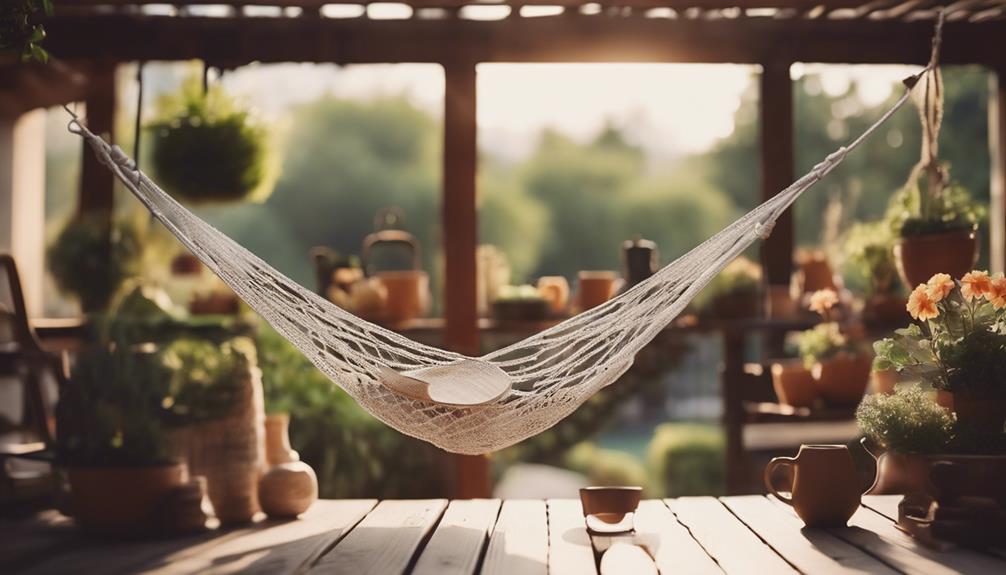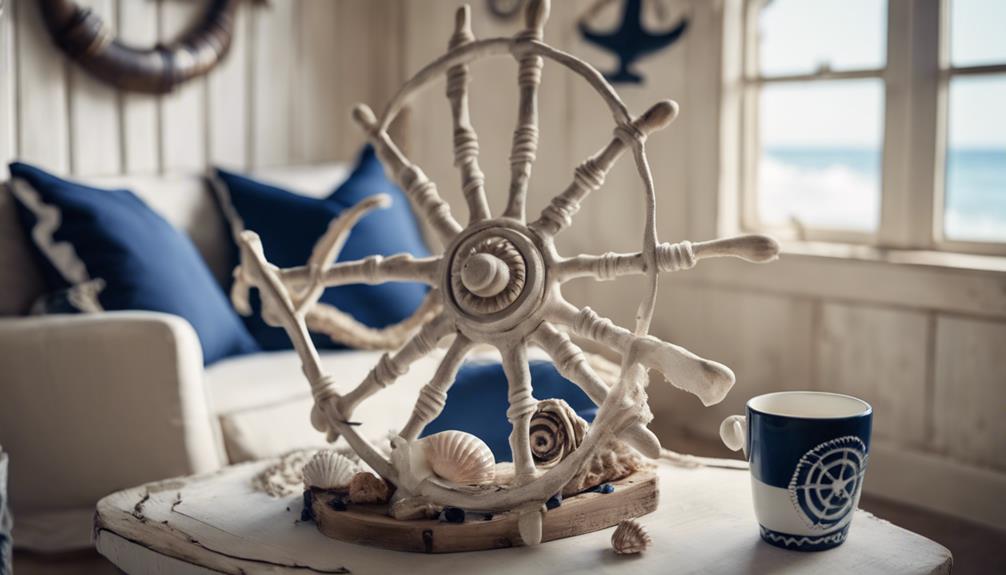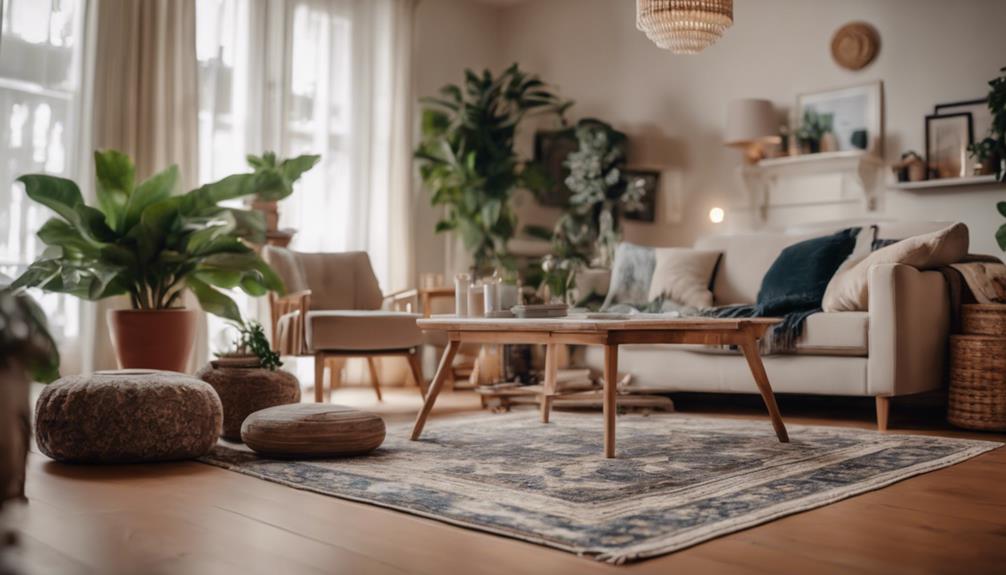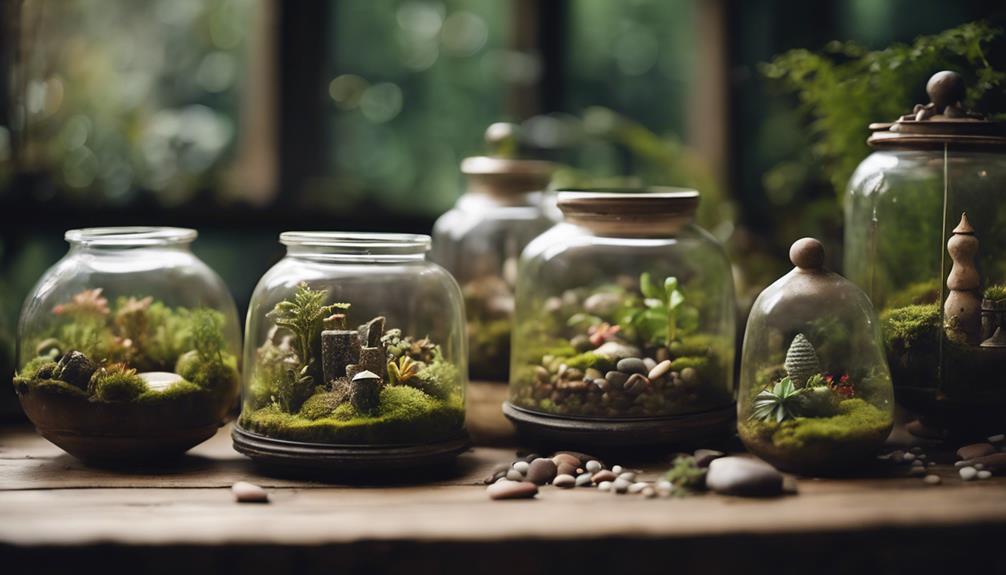We create a winter wonderland scene on a tray by curating decorative elements in whites, greens, and golds, and strategically designing the layout to smoothly shift from holidays to winter. We opt for a sturdy, elegant tray base, incorporating faux snow and white cotton balls for a snowy texture. Miniature winter elements like snow-covered houses and animals add depth, while candles create a warm ambiance. Natural winter accents like pinecones and evergreen branches infuse the space with coziness. As we balance heights and textures, our winter wonderland tray comes alive. Now, let's explore more ideas to bring this magical scene to life.
Key Takeaways
• Start with a sturdy, elegant tray base, such as white marble, and add felt pads to prevent scratching.
• Add a snowy texture with faux snow or white cotton balls, and layer with faux fur, feathers, or sparkly snowflakes.
• Create a focal point with a beautifully crafted candle holder or a standout decorative piece, like a snowglobe or miniature winter scene.
• Incorporate natural winter accents like pinecones, evergreen branches, and birch logs to infuse warmth and coziness.
• Balance heights and textures with a curated selection of winter-themed decorations, such as snow globes, ceramic houses, and holiday figurines.
Building a Winter Wonderland Scene
As we start constructing our winter wonderland scene, we'll begin by curating a selection of decorative elements that evoke a sense of snowy serenity. We're talking whites, greens, golds, and snowglobes – all the classic winter wonderland colors that exude 'cozy' and 'inviting'.
Our winter wonderland tray will be a haven of tranquility in our home, a place where we can escape the chaos of everyday life.
To craft this winter wonderland, we'll choose items that flow seamlessly from the holidays to a winter decor, ensuring our decor stays fresh and exciting even after the festive season.
A standout piece, like a unique ornament or glass cannister, will serve as a focal point, drawing the eye and adding visual interest to our scene. We'll experiment with textures, heights, and elements like figurines, trees, or candles to create a visually appealing centerpiece.
And, of course, a glass cannister filled with sugar will add a touch of whimsy, recreating the magical feeling of snowfall in our own home.
Choosing the Perfect Tray Base
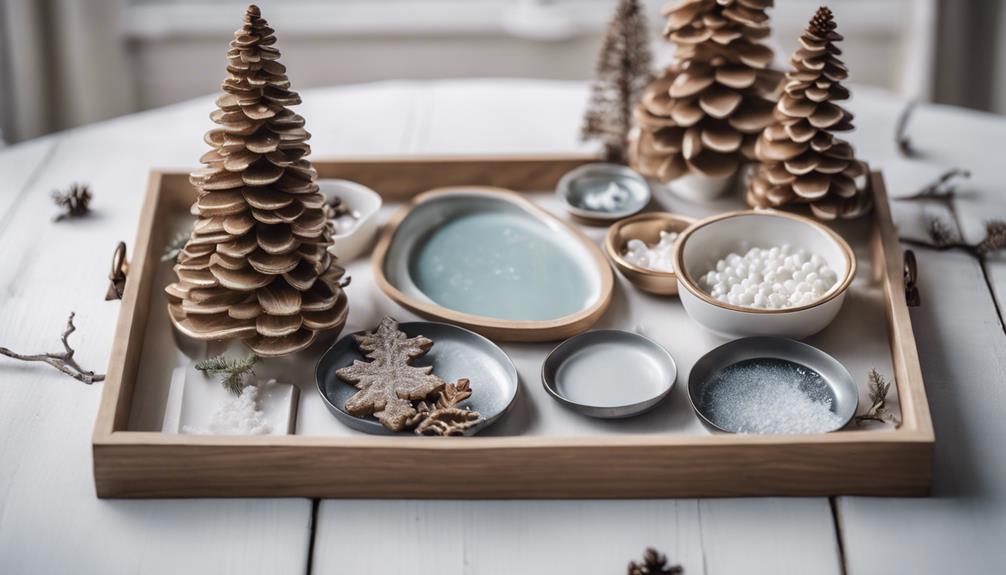
We'll anchor our winter wonderland scene with a sturdy, elegant base that sets the tone for the serene and magical atmosphere we want to create. For our winter tray decor, we need a base that complements the wintery theme. A perfect tray base should be sturdy, elegant, and easy to move around.
Here are three essential considerations for choosing the perfect tray base:
- Material: A white marble tile makes an excellent base, providing a clean and sophisticated look for our winter tray decor.
- Practicality: Add felt pads to prevent the tile from scratching against the surface it's placed on.
- Handles: While handles can be helpful for moving the tray, they're not necessary for a winter decor setup.
A sparkly or icy design can add a touch of winter wonder to our base. Ultimately, the perfect tray base should evoke a sense of serenity and magic, setting the tone for our winter wonderland scene.
Adding Snowy Texture and Depth

Let's create a winter wonderland scene that's both visually appealing and inviting by incorporating a variety of textures and elements that evoke a sense of snowy serenity.
To add snowy texture and depth to our Winter Wonderland Tray, we can incorporate several elements. Faux snow or white cotton balls can create a snowy texture on the tray. We can also layer different textures like faux fur, white feathers, or sparkly snowflakes for depth. Additionally, white or silver ornaments can add a frosty touch to the decor.
| Element | Texture | Effect |
|---|---|---|
| Faux Snow | Soft, Fluffy | Snowy Texture |
| Faux Fur | Soft, Velvety | Depth |
| White Feathers | Light, Airy | Whimsical Touch |
| Sparkly Snowflakes | Shiny, Iridescent | Frosty Accent |
| White Ornaments | Smooth, Glossy | Winter Wonderland Feel |
Incorporating Miniature Winter Elements

Now that our tray has a snowy foundation, we're ready to populate it with miniature winter elements that bring the scene to life. To create a cozy winter village, we can incorporate miniature snow-covered houses or cottages, adding a touch of whimsy to our winter wonderland tray.
We can also add small figurines of animals like deer, birds, or polar bears for an extra whimsical touch.
Here are three essential miniature elements to include:
- Tiny trees: These can be placed strategically around the tray to create a sense of depth and dimension.
- Snowmen and sleds: These miniature winter elements add a playful touch to our winter wonderland scene.
- Miniature animals: Adding figurines of animals like deer, birds, or polar bears creates a sense of movement and life in our winter wonderland.
Creating a Focal Point With Candles
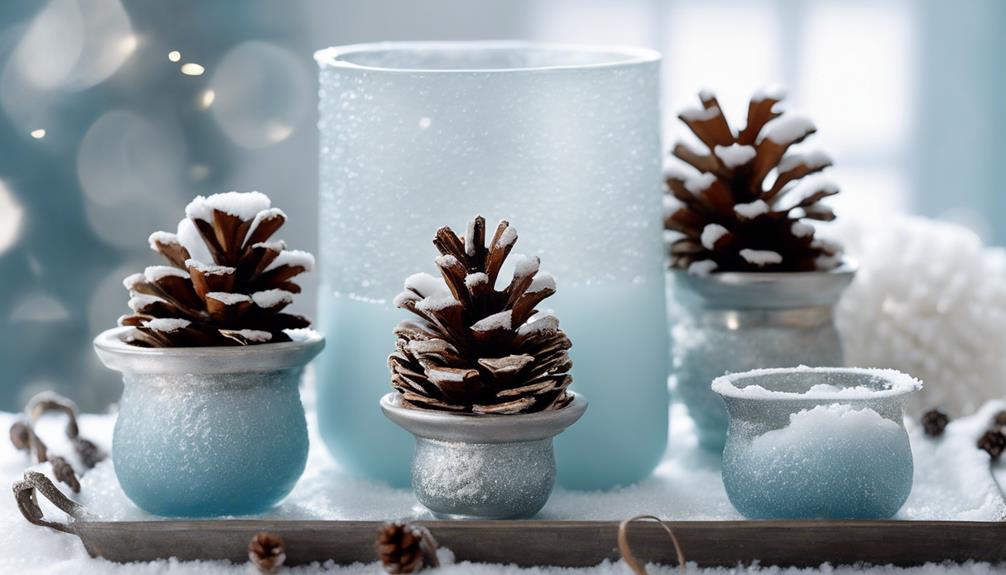
As we move on to creating a focal point in our winter wonderland tray, a beautifully crafted candle holder takes center stage. We opt for a pillar candle holder in champagne-colored mercury glass, which adds a touch of elegance and sophistication to our winter wonderland theme.
By placing it towards the back of the tray, we guarantee height without overpowering the other decor pieces. The sparkly and lightweight design of the candle holder adds a level of charm and refinement to our tray decor. We make sure the candle holder remains in place after adding other items, creating a cohesive and visually appealing arrangement.
Incorporating candles into our winter tray decor creates a warm and inviting ambiance for the season. The soft glow of the candles adds a cozy touch, making our winter wonderland tray a welcoming centerpiece for any room.
Bringing in Natural Winter Accents
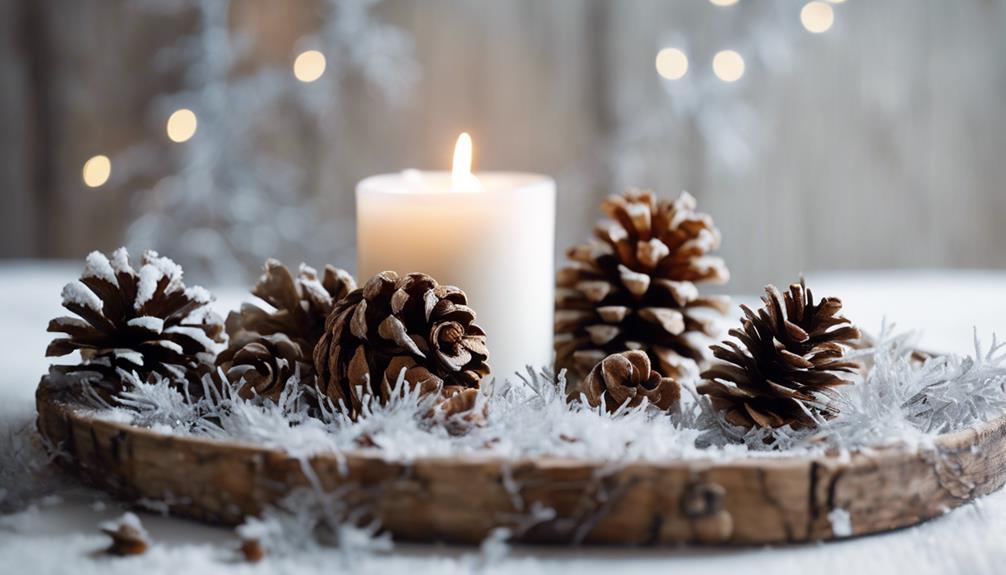
As we turn our attention to bringing in natural winter accents, we're excited to explore the beauty of winter elements inside and nature's winter beauty.
We'll incorporate natural winter accents like pinecones, evergreen branches, and birch logs on the tray, which will instantly evoke the feeling of winter wonderland.
Winter Elements Inside
We bring the outdoors in by incorporating natural winter elements into our winter wonderland tray, infusing the space with the warmth and coziness of the season.
To create a cozy winter atmosphere, we focus on bringing in natural winter elements inside. This can be achieved by incorporating elements like:
- Pinecones and evergreen branches to add a touch of the outdoors to our tray.
- Frosted berries to give a pop of color and festive feel.
- Faux snow to mimic a snowy landscape and add a touch of sparkle.
Nature's Winter Beauty
By incorporating natural winter accents, we bring the serene beauty of winter landscapes into our homes, evoking a sense of coziness and tranquility.
To create a winter wonderland atmosphere, we incorporate natural elements like pinecones, twigs, and evergreen branches, which add a rustic feel to our cozy decor.
We can also use white and silver accents to mimic the look of snow and frost, further enhancing the winter wonderland theme.
To bring warmth and a touch of nature to our decor, we opt for textures like faux fur, burlap, and wood.
Candles with scents like pine or cinnamon can evoke the essence of a winter forest, making our space feel cozier.
By mixing in metallic accents like silver or gold, we can enhance the magical and enchanting atmosphere of a winter wonderland.
Adding Sparkle With Ornaments and More

As we continue to craft our winter wonderland tray,
we're excited to explore the importance of strategically placing ornaments and decorations to create a visually stunning centerpiece.
We'll examine the art of winter ornament placement, considering factors like balance, texture, and height to create a cohesive look.
By incorporating sparkling centerpiece ideas,
we can add an extra layer of magic to our winter wonderland tray.
Winter Ornament Placement
To add a touch of magic to our winter wonderland tray, we strategically place ornaments that catch the light and sparkle, drawing the eye to the festive arrangement. By doing so, we create a visually appealing display that exudes festive charm. When it comes to winter ornament placement, we consider a few key factors to achieve a balanced look.
Here are three essential tips to keep in mind:
- Mix and match ornaments: Combine different sizes, shapes, and materials to add visual interest to our winter wonderland tray.
- Group or scatter ornaments: Experiment with clustering ornaments together or spreading them out to create a balanced arrangement.
- Experiment with height and depth: Hang ornaments from branches or incorporate them into the decor arrangement to add depth and dimension.
Sparkling Centerpiece Ideas
We craft a dazzling centerpiece for our winter wonderland tray by combining ornaments, candles, and decorative elements that shimmer and shine.
To create a beautiful, sparkling centerpiece, we start by incorporating metallic bells and ornaments in a footed bowl for a festive touch. A champagne-colored branch adds a sparkly and Wonderland-like effect, while a gold leaf ribbon enhances texture and sparkle on the tray.
For elegance, we place a pillar candle holder in champagne-colored mercury glass. To create a balanced composition, we vary the heights and textures of the elements, ensuring a visually appealing centerpiece.
These sparkling centerpiece ideas bring our Winter Wonderland tray to life, filling our space with warmth and festive cheer. By combining these elements, we create a stunning centerpiece that's sure to be the focal point of our winter decor.
With these beautiful, sparkling elements, we've crafted a Winter Wonderland that's truly magical.
Displaying Treasured Winter Keepsakes
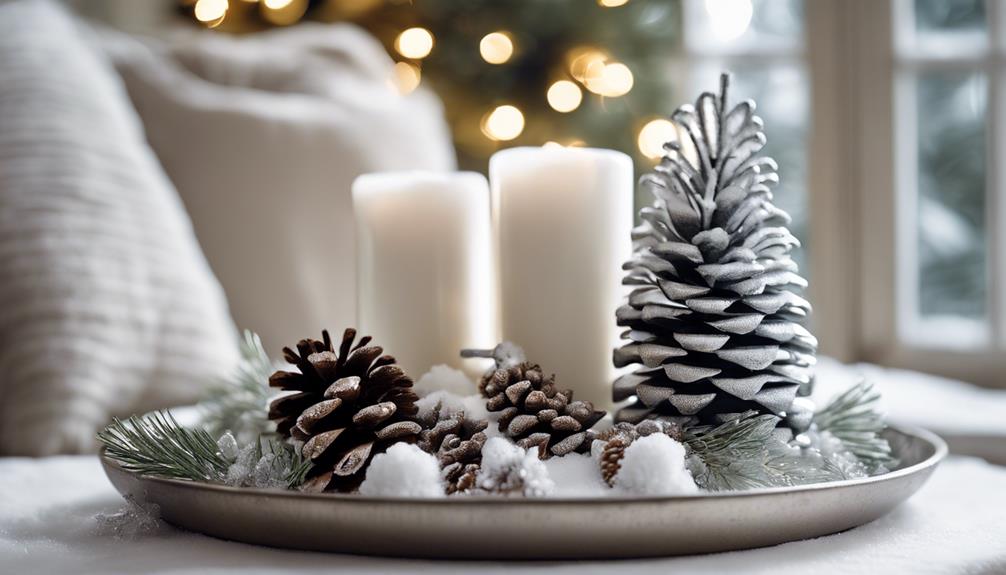
We curate a winter wonderland tray filled with treasured keepsakes that spark joy and nostalgia. As we arrange our favorite winter decorations, we're reminded of the magic and love that fills our homes during this special time of year.
To create a visually appealing display, we balance heights and textures by incorporating a mix of items such as:
- Snow globes that add a whimsical touch
- Ceramic houses that evoke a sense of winter wonder
- Holiday figurines that bring a touch of nostalgia
Finishing Touches for a Cozy Atmosphere
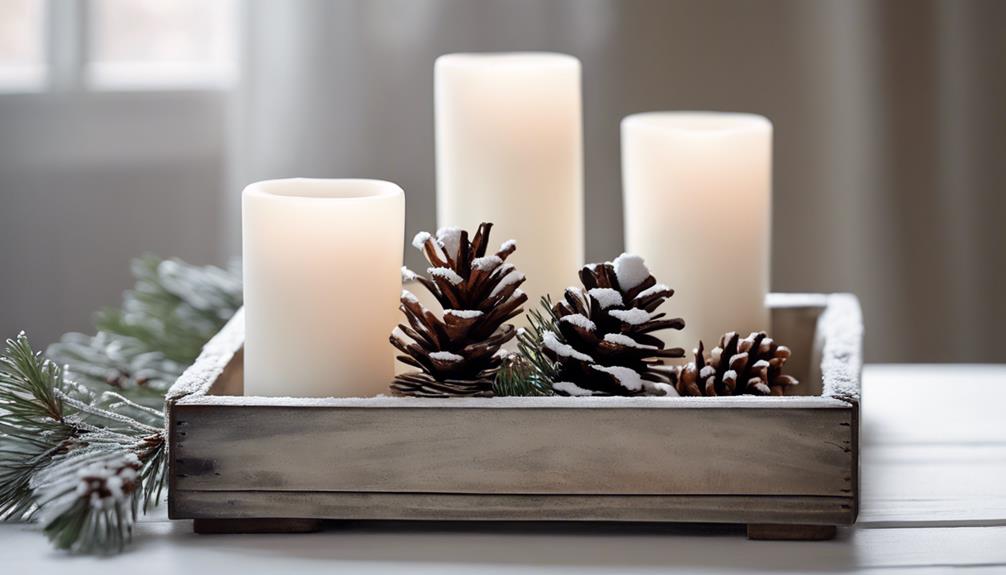
With a foundation of treasured winter keepsakes established, we're now ready to add the finishing touches that will transform our winter wonderland tray into a cozy and inviting atmosphere.
To achieve this, we'll incorporate elements that evoke warmth and magic. A faux fur throw or blanket adds a tactile sense of coziness, while LED candles or fairy lights cast a warm, soft glow, creating a warm ambiance that's perfect for a winter wonderland.
Adding a small snow globe or winter-themed figurine injects a touch of whimsy, while a scented candle with notes of pine, cedar, or cinnamon fills the air with a festive aroma.
Finally, using a mirrored tray to reflect light adds a shimmering effect, amplifying the overall magic of our winter wonderland decor.
Styling Your Winter Wonderland Tray
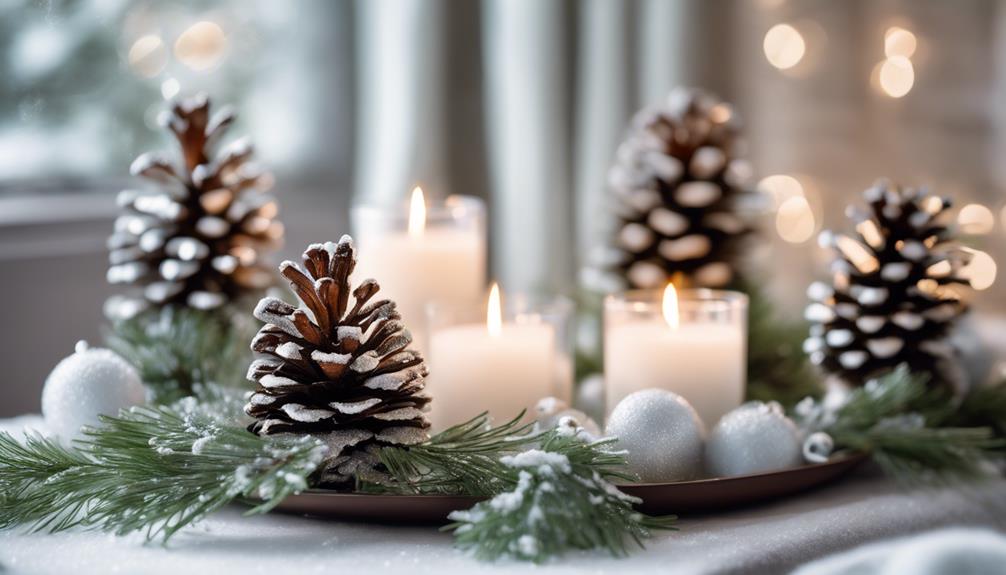
As we immerse ourselves in styling our winter wonderland tray, a symphony of whites, greens, and golds sets the tone for a serene and enchanting atmosphere. We're not just creating a decorative piece, we're crafting an experience that transports us to a winter wonderland.
To achieve this, we'll incorporate a mix of textures, colors, and shapes that evoke the magic of the season.
Here are three essential elements to include in our winter wonderland tray:
- Ceramic houses and trees: These add a charming touch, transporting us to a whimsical winter wonderland.
- Glass cannister filled with sugar: This creates a snowy effect, adding depth and visual interest to our tray.
- Unique ornaments or figurines: These become the focal point of our winter wonderland tray, drawing the eye and sparking imagination.
Frequently Asked Questions
How to Decorate a Room Like Winter Wonderland Quick?
We're excited to transform our space into a winter wonderland quickly! We'll start with a calming color scheme, add magical touches like snowflakes and twinkling lights, and cozy up with plush throws and candles for a warm winter ambiance.
How to Turn Your Garden Into a Winter Wonderland?
We're transforming our garden into a winter wonderland by incorporating white and silver decorations, string lights, and faux snow, adding cozy elements like a fire pit and evergreen trees to create a magical atmosphere.
Conclusion
As we step back to admire our winter wonderland tray, we're reminded that the beauty of the season lies in the details. By thoughtfully selecting elements that evoke a sense of wonder, from the snowy texture to the soft glow of candles, we've created a vignette that whispers 'winter magic.'
As decorative stylist, Amy Chalmers, notes, 'It's all about creating a mood, not just a display.'
Our winter wonderland tray is now ready to be the perfect centerpiece for our holiday gatherings, inviting all to pause and revel in the season's splendor.

